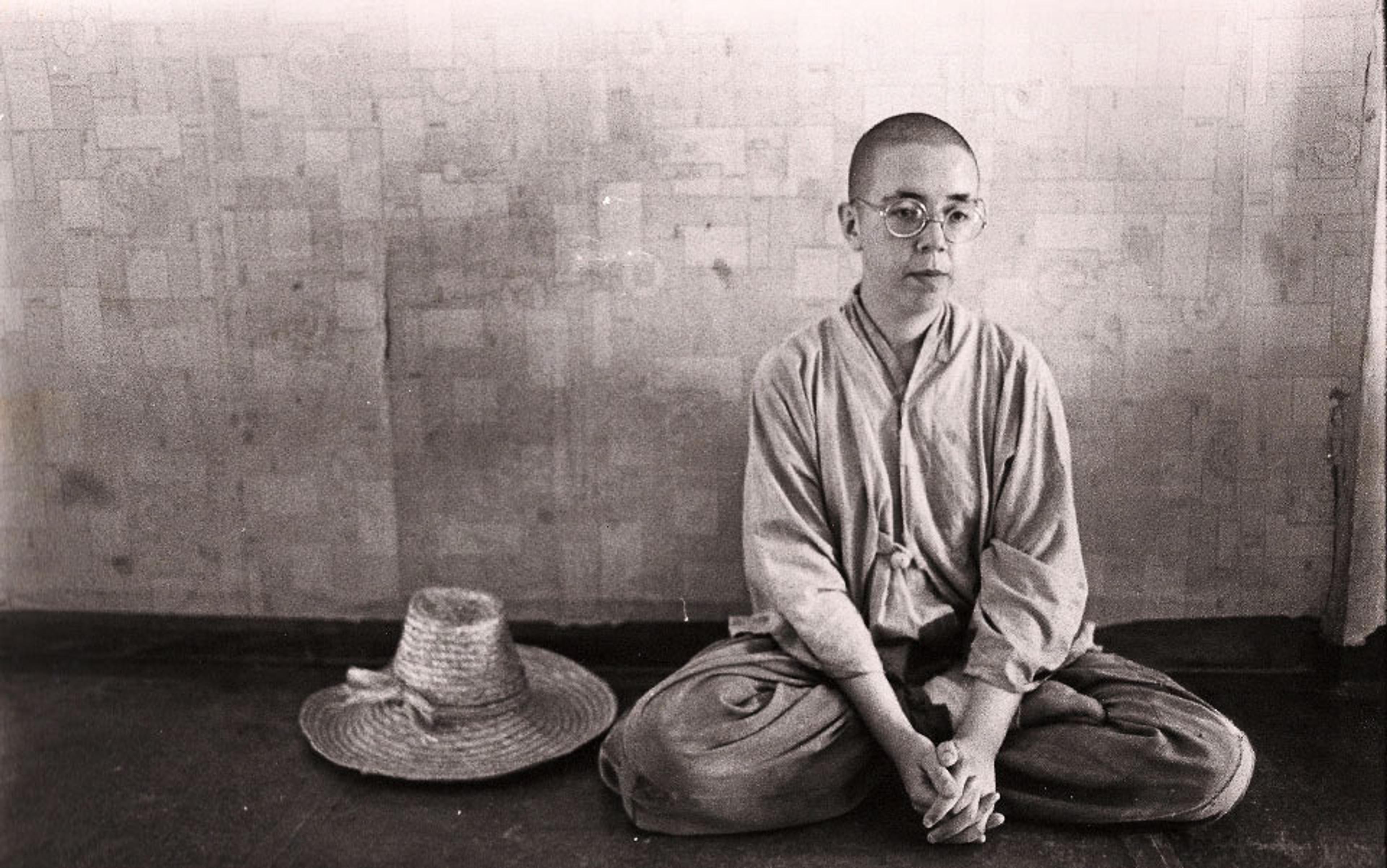The concept of nirvana occupies a unique place in Buddhist thought – not just because it represents the culmination of the Buddhist path, and not just because it represents the nicest imaginable place to be, but also because of the way it straddles the two sides of Buddhism.
There is, on the one hand, the naturalistic side of Buddhism, featuring ideas that would fit easily into a college psychology or philosophy course: ideas about the nature of the mind, about the causes of human suffering, and about how we should live our lives in light of these realities. These are the ideas that form the core of the ‘secular Buddhism’ that is practised by many in the West. Indeed, so naturalistic, so ‘secular’, is this set of ideas that some people see Buddhist meditation as more of a therapeutic than a spiritual undertaking, as basically palliative and not too profound. That’s a particularly common view of the kind of Buddhist meditation known as mindfulness meditation – which is sometimes packaged in the frankly therapeutic form of ‘mindfulness-based stress reduction’.
And then there is the more exotic side of Buddhism, which features supernatural, or at least mindbendingly metaphysical, ideas. These ideas include various cosmic realms and deities, but the most famous such idea is reincarnation – or, as Buddhists more commonly call it, rebirth.
Nirvana certainly has its exotic aspects. Attaining it, according to traditional Buddhist belief, means being liberated from an otherwise endless cycle of rebirth. But this story about nirvana – the story about how exactly you find the escape hatch from recurring life cycles – leads seamlessly to a more naturalistic story about nirvana, a claim about the mechanics of suffering and of contentment. And in the process of following one story to the other, you can see mindfulness meditation in a new light, a light that emphasises how much more than casually therapeutic it can be; a light that shows it to be one of the most radical undertakings imaginable, a rebellion against the very laws that govern human existence.
In ancient texts, nirvana is often described with a word that is commonly translated as ‘the unconditioned’. For years I heard this strange-sounding term and wondered what it meant, but I figured that understanding it without actually reaching nirvana was probably hopeless and, for my purposes, not all that important. It turns out that I was wrong on both counts. The question ‘What is the unconditioned?’ has a pretty clear answer and a very important one, an answer that forms a kind of intersection between the exotically metaphysical and the naturalistic.
One obvious approach to deciphering ‘the unconditioned’ is to drop the un and ask what conditioned means. ‘The conditioned’, in Buddhist terminology, can be thought of as roughly synonymous with ‘the caused’. Which makes sense. After all, when we talk about the conditions that give rise to something – the conditions that lead water to boil or rain to fall or the crime rate to rise – we’re basically saying that these conditions are involved in the causal chain that led to that something. Things that are ‘conditioned’ in the Buddhist sense are things that are subject to causes.
So if nirvana is ‘the unconditioned’, then you might think that it would involve some kind of escape from ‘the caused’. And you would be right! But what does that mean?
The answer to that question involves one of the most important terms in Buddhism: paticca-samuppada. It is a term that has numerous applications and numerous translations. For present purposes – when we’re using it to illuminate the logic of nirvana – a good translation is ‘conditioned arising’.
In its most generic sense, conditioned arising refers to the basic idea of causality: out of certain conditions some things arise; out of other conditions other things arise. But the term is also used to refer to a specific sequence of causal links – a series of 12 conditions, one giving rise to the next – that are said to enslave human beings in the cycle of endless rebirth. It is this chain of causal links that nirvana is said to break.
I won’t run through the exact sequence of 12 conditions, partly because some of them are, for my money, a little murky. But the part of the sequence that concerns us, the part that puts a finer point on nirvana in both the exotic and the naturalistic senses of the term, is reasonably clear. That part starts after a person’s sensory faculties – eyes, ears, tongue, etc – have taken shape. It is through these faculties that the person’s consciousness makes contact with the material world. Or, as it is put more formally in ancient texts that spell out the 12 causal links: through the condition of the sensory faculties, contact arises. And here is the next link: through the condition of contact, feelings arise – which makes sense, because, in the Buddhist view (and in the view of many modern psychologists), the things we perceive through our sense organs tend to come with feelings attached, however subtle the feelings.
Then, in the next causal link, feelings give rise to tanha, to ‘craving’: we crave the pleasant feelings, and crave to escape the unpleasant feelings.
Let’s freeze-frame right here, because this is where the action is. Here is how Bhikkhu Bodhi, an American Buddhist monk who has translated reams of ancient Buddhist texts into English, put it in a series of lectures he recorded in 1981:
It is here in this space between feeling and craving that the battle will be fought which will determine whether bondage will continue indefinitely into the future or whether it will be replaced by enlightenment and liberation. For if instead of yielding to craving, to the driving thirst for pleasure, if a person contemplates with mindfulness and awareness the nature of feelings and understands these feelings as they are, then that person can prevent craving from crystallising and solidifying.
This is where we start to segue from the exotic to the naturalistic. The liberation that Bhikkhu Bodhi is talking about is, in the first instance, a liberation from perpetual rebirth, a liberation that will fully kick in at the end of this life cycle. But it is also liberation in the here and now, liberation from the suffering that tanha brings – liberation from the craving to capture pleasant feelings and to escape unpleasant feelings, liberation from the persistent desire for things to be different than they are. (The Buddha famously said that human life as ordinarily lived involves persistent suffering, but ‘suffering’ is a translation of the ancient word dukkha, whose connotations also include ‘unsatisfactoriness’ – a connotation that well captures the Buddhist view of suffering’s nature and roots.)
These two senses of liberation – liberation from rebirth, and liberation from suffering – are reflected in the Buddhist idea that there are two kinds of nirvana. As soon as you are liberated in the here and now, you enter a nirvana you can enjoy for the rest of your life. Then, after death – which will be your final death, now that you’re liberated from the cycle of rebirth – a second kind of nirvana will apply.
If you observe your feelings mindfully rather than just reacting to them, you can escape the control
I’m sorry to say I can’t describe the first kind of nirvana from personal experience, and I’m ambivalent about not being able to describe the second kind. But the main point is that whichever kind of nirvana you’re focused on, mindfulness meditation directly addresses the challenge of getting there. Mindfulness involves, among other things, cultivating an awareness of your feelings that fundamentally changes your relationship to them. It can, if practised rigorously, let you experience feelings with a kind of dispassion or ‘non-attachment’ – neither struggling uncomfortably to escape the ‘bad’ feelings nor trying, desperately and futilely, to hang on to the ‘good’ feelings.
So, regardless of how exotic or how practical your aspirations – whether you believe in a cycle of rebirth and want to escape it, or just want to attain complete liberation in the here and now, or for that matter just hope to find partial liberation in the here and now – a key tool in the quest for liberation, mindfulness, remains the same.
And, accordingly, some of the basic terminology remains the same. Even if you’re not trying to escape an eternal repetition of 12 successive conditions, even if you would just like your one and only life to be better, you are still seeking liberation from conditions – from chains of causation that otherwise shackle you. The things in your environment – the sights, the sounds, the smells, the people, the news, the videos – are pushing your buttons, activating feelings that, however subtly, set in motion trains of thought and reaction that govern your behaviour, sometimes in ways that are unfortunate. And they will keep doing that unless you become more mindful – unless you start paying attention to what’s going on, and thus respond to it reflectively, not reactively.
All of this points to the sense in which the ancient Buddhist appraisal of the human condition is very modern in spirit. The human brain is a machine designed by natural selection to respond in pretty reflexive fashion to the sensory input impinging on it. It is designed, in a certain sense, to be controlled by that input. And a key cog in the machinery of control are the feelings that arise in response to the input. A donut smells good, so we approach it; a restless hunger feels bad so we try to escape it – by, say, eating a donut; social status feels good and ridicule feels bad, so we pursue and avoid, respectively.
If you interact with such feelings via tanha – via the natural, reflexive thirst for the pleasant feelings and the natural, reflexive aversion to the unpleasant feelings – you will continue to be controlled by the world around you. But if you observe those feelings mindfully rather than just reacting to them, you can in some measure escape the control; the causes that ordinarily shape your behaviour can be defied, and you can get closer to the unconditioned.
There are debates within Buddhism about how dramatically to conceive of nirvana and the unconditioned. Is there something like a transcendent metaphysical ‘space’ that you in some sense occupy once fully liberated? Or is it a bit more mundane, just freedom from the mindless reactivity to causes, to conditions, that would otherwise control you? People who embrace a naturalistic Buddhism, and don’t believe in rebirth, tend to go with the less dramatic interpretation. Indeed, some of them don’t like the term the unconditioned because it sounds so dramatic. Stephen Batchelor, a longtime proponent of ‘secular Buddhism’ and the author of the book Buddhism Without Beliefs (1997), has written: ‘There is no such thing as the unconditioned, only the possibility of not being conditioned by something.’
Personally, I wouldn’t discourage even ‘secular’ Buddhists from using the term the unconditioned. Thinking of complete liberation in the here and now as a kind of zone – a metaphorical if not a metaphysical zone – might be useful. And it might be useful regardless of whether you think the zone is realistically reachable or just something you can get closer and closer to.
I can testify that it’s possible to get into something that feels like a zone. When I phoned my wife after my first weeklong silent meditation retreat, she said I sounded like a completely different person – before I had even said anything about the retreat, or said anything of substance at all. The very tenor of my voice sounded different, she said. And she liked the new tenor a lot.
Now, I grant you that this might have been more of a comment on the old tenor than on the new one. A few years earlier, trying to articulate what she liked about my brother, she had looked at me and said: ‘He’s like a nice version of you.’ (She laughed when she said it, which I took as a good sign.) Anyway, the point is that there had been a real change of tenor.
Certainly, the world as I saw it had a new tenor. I had shed so much of my usual self-absorption that I could take a new kind of delight in the people and things around me. I was more open, suddenly inclined to strike up conversations with strangers. The world seemed newly vibrant and resonant.
It is the fate of all conditioned things to change when conditions change. And conditions change all the time
There’s something ironic about the zone I was in. Science, in its displacement of traditionally religious worldviews, is sometimes said to have brought on the ‘disenchantment’ of the world, draining it of magic. And you would think that a meditative discipline devoted, in some sense, to tamping down the influence of feelings on perception, to fostering a view of sober clarity, would only abet that tendency. But Batchelor says meditative practice can lead to the ‘re-enchantment’ of the world, and I know what he means. After that first retreat, I felt like I was living in a zone of enchantment, a place of wonder and preternatural beauty.
No, that’s not the same as entering a zone that is magically impervious to causation. I was still reacting at least somewhat reflexively to the causes impinging on me. Still, one source of the enchantment, I think, was that I was spending less time reacting, less time having my buttons pushed, and more time observing – which, as a bonus, allowed for more thoughtful responses to things. I assume that living in the unconditioned would be great, but living in the less conditioned can be pretty great, too.
You could take many ideas that are fundamental to Buddhism and recast them in terms of the conditioned, the caused. Indeed, you could say that Buddhist philosophy consists largely of taking the idea of causality really, really seriously.
Consider the famously radical and obscure concept of ‘not-self’ – the idea that what we think of as the ‘self’ in some sense doesn’t exist. One way to put this idea is to say that the ‘self’ is in such constant causal interaction with its environment, is so pervasively influenced by the world out there, as to raise doubts about how firm the boundaries of the self – and, for that matter, the core of the self – really are. In his foundational ‘discourse on the not-self’, the Buddha repeatedly asked whether various things we think of as parts of our self – feelings, thoughts, even our bodies – are really completely under our control. And if they’re not under our control, then how can we call them parts of a ‘self’?
One way to describe why they’re not under our control is that – until we’re liberated, at least – they’re under the control of outside forces: they’re conditioned.
In that discourse, the Buddha also emphasises the impermanence of the things we think of as parts of the self. And this too – the perennial arising and passing away of thoughts, emotions, attitudes – is a consequence of the ever-changing forces that act on us, forces that set off chain reactions inside us. The things inside us are subject to causes, to conditions – and it is the fate of all conditioned things to change when conditions change. And conditions change pretty much all the time.
You might say that the path of progress in a serious mindfulness-meditation regimen consists largely of becoming aware of the causes impinging on you, aware of the way that things manipulate you – and aware that a key link in that manipulation lies in the space where feelings can give rise to tanha, to a craving for pleasant feelings and an aversion to unpleasant feelings. This is the space where mindfulness can critically intervene.
Maybe I should have put an asterisk after the word aware in the previous paragraph. I’m not talking about an abstract understanding – an academic awareness – of these chains of causality. I’m talking about a carefully cultivated experiential understanding, a mindful awareness that brings the power to break, or at least loosen, the chains. This kind of awareness, which critically includes an awareness of the feelings evoked by perceptions and by thoughts, and the feelings that guide trains of thought, can be heightened to surprising levels through meditation.
Buddhist enlightenment has something in common with Enlightenment in the Western scientific sense
That said, undergirding this experiential understanding, and often accompanying it, is the more abstract understanding that is part of Buddhist philosophy. Making real progress in mindfulness meditation almost inevitably means becoming more aware of the mechanics by which your feelings, if left to their own devices, shape your perceptions, thoughts and behaviour – and becoming more aware of the things in your environment that activate those feelings in the first place. You could say that enlightenment in the Buddhist sense has something in common with Enlightenment in the Western scientific sense: it involves becoming more aware of what causes what.
All of this flies in the face of stereotype. Mindfulness meditation is often thought of as warm and fuzzy and, in a way, anti-rational. It is said to be about ‘getting in touch with your feelings’ and ‘not making judgments’. And, yes, it does involve those things. It can let you experience your feelings – anger, love, sorrow, joy – with new sensitivity, seeing their texture, even feeling their texture, as never before. And the reason this is possible is that you are, in a sense, not making judgments – that is, you are not mindlessly labelling your feelings as bad or good, not fleeing from them or rushing to embrace them. So you can stay close to them yet not be lost in them; you can pay attention to what they actually feel like.
Still, you do this not in order to abandon your rational faculties but rather to engage them: you can now subject your feelings to a kind of reasoned analysis that will let you judiciously decide which ones are good guiding lights. So what ‘not making judgments’ ultimately means is not letting your feelings make judgments for you. And what ‘getting in touch with your feelings’ ultimately means is not being so oblivious to them that you get pushed around by them. And all of this means informing your responses to the world with the clearest possible view of the world.
Underlying this whole endeavour is a highly mechanistic conception of how the mind works. The idea is to finely sense the workings of the machine and use that understanding to rewire it, to subvert its programming, to radically alter its response to the causes, the conditions, impinging on it. Doing this doesn’t let you enter ‘the unconditioned’ in the strict sense; it doesn’t let you literally escape the realm of cause and effect. Then again, airplanes don’t literally defy the law of gravity. But they still fly.
This is an edited extract from Why Buddhism Is True (2017) by Robert Wright, out now from Simon & Schuster.
This Essay was made possible through the support of a grant from the Templeton Religion Trust to Aeon. The opinions expressed in this publication are those of the author and do not necessarily reflect the views of the Templeton Religion Trust.
Funders to Aeon Magazine are not involved in editorial decision-making, including commissioning or content-approval.






